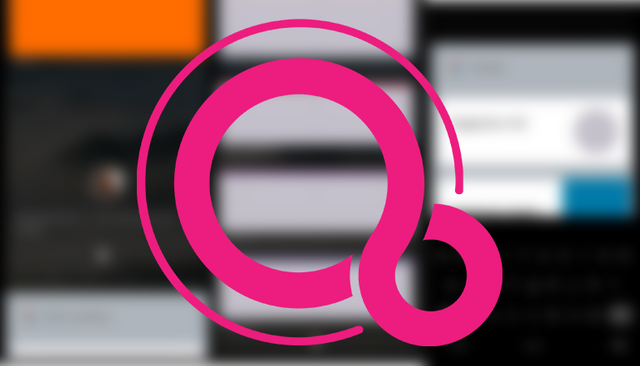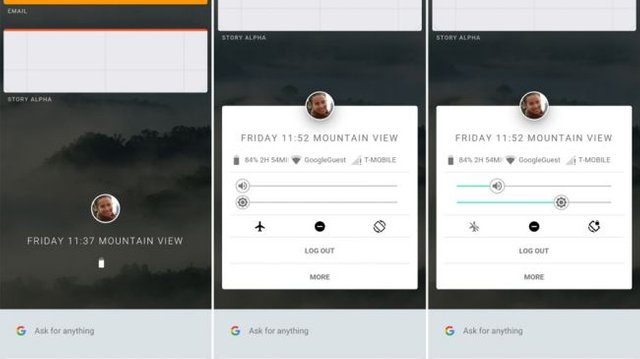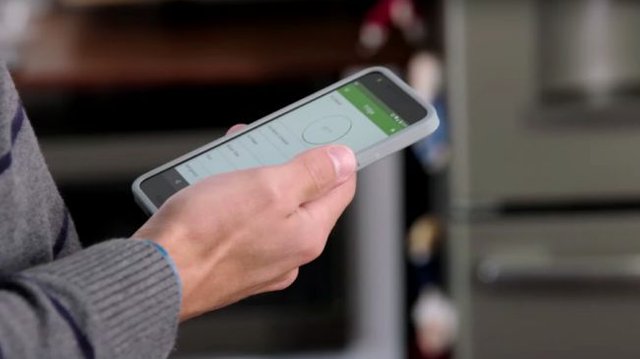Hello Steemians,
So, today I'm writing about the trending topic of Google Fuchsia. The number of people wants to know about what exactly the kind of OS planned by Google since 2016.
'Fuchsia is going to accomplish much of what Microsoft and Apple already have in Windows 10 and iOS-to-macOS Sierra Continuity, respectively, but in a very Google way.'
Image Credit: Google
The update reveals that Fuchsia will run Android apps using a special version of the Android Runtime or ART. This particular version of ART can be installed on any Fuchsia device using a .far file, which is Fuchsia’s equivalent of Android’s APK.
The ability to run Android apps on Fuchsia is important because without it, it would be almost impossible to transition users from the older operating system to the new one.
Introduction:
So basically, when we are talking about Fuchsia, Fuchsia is a capability-based operating system currently being developed by Google. It first became known to the public when the project appeared on GitHub in August 2016 without any official announcement. In contrast to prior Google-developed operating systems such as Chrome OS and Android, which are based on the Linux kernel, Fuchsia is based on a new microkernel called "Zircon".
What is Zircon?
As we now know, Fuchsia is based on a new microkernel called "Zircon". Zircon is derived from "Little Kernel", a small operating system intended for embedded systems. "Little Kernel" was developed by Travis Geiselbrecht, a creator of the NewOS kernel used by Haiku. It is important to mentioned here that as the GitHub project suggests Fuchsia can run on many platforms, from embedded systems to smartphones, tablets, and personal computers. In May 2017, Fuchsia was updated with a user interface, along with a developer writing that the project was not a "dumping ground of a dead thing", prompting media speculation about Google's intentions with the operating system, including the possibility of it replacing Android.
Some more basic information about this OS:
Developer: Google
Written in: C, C++, Dart, Go, Rust
OS family: Zircon
Working state: Current
Source model: Open-source
Initial release: 15 August 2016; more than 2 years ago
Available in: English
Kernel type: Microkernel
License: BSD, MIT, Apache License 2.0
Official website: fuchsia.googlesource.com

Android and Chrome OS may be Google’s best-known software ventures, but the company is actually working on a third operating system. It’s called Fuchsia, and when it was first discovered in 2017, it only popped up as a single command line. Now, however, we know a lot more about the operating system.
Fuchsia looks totally different than any other mobile operating system we’ve seen, including Android, but that could be the point. The fact is that there’s currently a ton of mystery surrounding the operating system. We don’t know what it’s for, if it’s aimed at eventually replacing Android, if it’s just an experiment by Google, or when we should expect to see the new OS at Google I/O.
'Google's next-gen operating system, Fuchsia, will have Android app support.'
Fuchsia confirmed to support Android apps
“What will happen to Android?” is one of the major questions asked of Google’s Fuchsia. It’s entirely possible Google intends for Fuchsia to replace Android — and that seems even more likely now, as it’s seemingly been confirmed Fuchsia will support Android apps. The news comes courtesy of news sites that noticed a new file had been added to the Android Open Source Project. The file concerns the addition of a special version of ART to Fuchsia. ART — or Android Runtime — would essentially allow Fuchsia to run Android apps, making a theoretical swap over to Fuchsia from Android rather more painless.
A Google Pixelbook running an early version of Fuchsia OS (Image Credit: Ars Technica)
We were expecting to see Google announce Google Fuchsia, or Google Andromeda – a fusion of its Chrome and Android operating systems (OS) – back in October 2017. That announcement never happened. What will Google Fuchsia look like, though? Well, there have been some Chromebooks, along with the Google Pixelbook, which can run both Android apps from the Google Play Store and even an early build of Fuchsia itself – which is also rumored to run Android apps. We think google Fuchsia, if and when it finally sees the light of day, will be the penultimate Google operating system across all kinds of devices.
Nobody knows what Google Fuchsia will look like in the end. There’s very little in the way of hard information, and what is out there is pretty vague. However, we do know that Google Fuchsia revolves around the idea of being able to do whatever you want from whatever device you have handy. We can even see hints of this approach in Google’s recent endeavors, like bringing Android Messages and a VR video editor to a broad range of hardware.
In fact, the maligned Google Pixel Slate might actually provide a hint at what the future of Google Fuchsia will be. Even if the tablet never runs the nascent OS, and doesn’t give a clue about the release date, it does provide some kind of marriage between Chrome OS and a mobile OS. Google changed the UI of Chrome OS to be more palatable on tablet – bringing it closer to a unified OS across different families of devices. Whether it relates to Fuchsia remains to be seen, but we look at it like a step in the right direction.
What exactly Google Fuchsia is?
Right now, there appears to be a divide within Google regarding what Fuchsia actually is. While the team working on it says they want Fuchsia to be the penultimate Google OS, running on all phones, tablets, laptops and smart home devices – Google’s leadership is still referring to it as an experiment. So, we’ll just have to wait and see what happens, and what materializes out of all this experimentation.Google Fuchsia, then, is a hybrid OS that is still very much in development.
The entirety of Fuchsia OS is comprised of two distinct but connected user interfaces (UI): a phone-centric one codenamed ‘Armadillo’ and a traditional desktop UI known as ‘Capybara’ internally, according to 9to5 Google. So far, more is known about the mobile version of Fuchsia than the laptop one, but ArsTechnica was recently able to get Fuchsia running on a Google Pixelbook in an awfully early state. And, it looks like both versions should be able to run Android apps, much like many Chromebooks in 2019. So, backwards compatibility looks to be something that early Fuchsia adopters can look forward to.
 Google Fuchsia as it appears on a smartphone device. Image Credit: Google
Google Fuchsia as it appears on a smartphone device. Image Credit: Google
Whether it’s in the mobile or desktop orientation, Fuchsia is laden with Google’s Material design found all over its Android and Chrome OS products. Shadows are a big focus on the design aesthetic, using a new Vulkan-based graphics renderer known as ‘Escher’ to do the job. The result is an interface with more depth to its look than traditionally flat OS products.
Fuchsia is also heavily focused on a cards-based interface, in which every app you open appears inside one of these cards – plus, you can place multiple apps into a single card. This orients the user around tasks at hand rather than apps. Those apps are expected to look the same across different devices because of a new cross-platform mobile app development framework, developed by Google, known as Flutter. Beyond that, Google Fuchsia revolves around Google Assistant more deeply accessing and working with your apps and information to provide even more actions and insights. Google has referred to these apps and pieces of information as ‘entities’, according to a GitHub developer page, and they’re all accessible by Google Assistant on Fuchsia. We’ve even seen a recent demo that further illustrates how deeply ingrained Google Assistant is on Fuchsia. And, it looks like Google will also be changing how it collects analytic data within Fuchsia, according to a report from 9to5 Google. Fuchsia will see the implementation of a new analytic program called ‘Cobalt’ which will collect information on how you use apps within the OS. Cobalt is supposedly a part of Google’s security-minded approach to the OS, but encryption hasn’t been worked in yet – but, we’re sure Google will work better security into Cobalt eventually.
Google Chrome, or at least an early build of Chromium is up and running on early builds of Google Fuchsia, according to a report from 9to5 Google. And, while it’s not ready for the spotlight, this does mean that the fledgling OS is getting closer to being usable without days of preparation.
Finally, Fuchsia wants to be the best cross-device OS to date. To achieve this, Fuchsia uses a new tool known as ‘Ledger’ by the GitHub community. Ledger, once you’re signed into a Google Account on a Fuchsia device, will automatically save your place in all installed apps across all Fuchsia devices.
All in all, Fuchsia is Google’s attempt to get the best of Chrome and Android into a single operating system that’s more efficient both while you’re using it and when you’re away – not to mention in between those states or between devices.
Google Fuchsia release date

Ever since August 2016, we’ve seen a ton of rumors about Google Fuchsia’s release date – and each turned out to be false. These rumors usually come up before Google’s big Google IO developer event in California, or when we know a big hardware release is around the corner. Back in February, it was revealed that Google’s former head of Android platform security, Nick Kralevich, had left the Android team to ‘define security’ over in the Fuchsia department. Describing it as a “new, experimental operating system,” Kralevich doesn’t hint at any specific launch window, however it does show where Google chooses to put its most crucial resources.
Today, all the speculation points to Google Fuchsia running within the next three years just on smart home devices, with a full public release coming within the next five years. Still, that seems to be an extremely shaky rumor – we’d be surprised if we saw it release before 2024 (or actual androids), if it ever actually comes out.However, recent developer messages through the Android Open Source Project suggest some movement. One of the commits mentions two repos, that the folks at 9to5 Google take to be the “incorporation of the official Fuchsia SDK”. Another commit mentions the Huawei Honor Play smartphone, so we could see Fuchsia tested on actual devices soon.
We’ve also seen evidence of other developers doing work on the platform. Yang Guo from the Node.js project at Google tweeted, looking for someone to help port Node over to Fuchsia, according to a report from Android Police. This suggests that Google is looking to implement full Javascript functionality to Fuchsia, and may point to some progress toward an eventual release date.
What might help point to some movement for the Google Fuchsia release date, though, is a new hire from Apple. Bill Stevenson, a senior macOS engineer for Apple, announced on LinkedIn that he is joining Google to bring Fuchsia to market.
 Is Fuchsia known for end of Android as we know it? Image Credit: TechRadar
Is Fuchsia known for end of Android as we know it? Image Credit: TechRadar
Some Top Rumored Fuchsia features
What advantages could moving to Fuchsia have for Google? Many, as it turns out. As we’ve already mentioned, Android was originally built to power digital cameras, before being adapted into an OS for touchscreen phones. As a result, much of Android doesn’t fit into the future Google sees for smart devices, with voice interaction being particularly important. Fuchsia would solve many of those issues while opening up more opportunities for Google as a result. Fuchsia would also have a more robust set of security features than Android, with encrypted user keys being built into the software to tighten security. Fuchsia would also be better than Android at adapting to various different sizes of screen, building toward an interlinked smart future in which Fuchsia powers everything from your doorbell to your toaster. By moving towards Fuchsia, Google can also dump Java and the issues it’s had surrounding the legal use of Java. It would also mean that Google could ditch the Linux kernel at the center of Android.
Conclusion
Of course, Fuchsia is still deep in early development, and don’t be surprised if some of these details change over time. According to Bloomberg’s report, there have already been conflicts within Google over Fuchsia’s security measures, as they would make it harder for Google’s advertising.
Try out Fuchsia once for yourself
As of early May, you can actually try out Fuchsia for yourself. SlashGear, in partnership with HotFix Computer Repair, has put together a downloadable Android Package Kit (APK) that you can install on your phone to check out the OS. The APK is kind of like a preview version of a launcher of the alpha version of what’s currently dubbed Armadillo. Armadillo is basically the version code name for Fuchsia, which is the operating system — kind of like Nougat, which is the version name, for the OS known as Android.
Head over to HotFixIt to download it for yourself, but before you do keep a few things in mind. Fuchsia is currently in its very early days, and as such don’t expect to be able to use it as your daily OS. While it should be relatively safe to use on most Android phones, you should generally only download the highly experimental software if you know what you’re doing.
Thank you so much Guys for reading this blog article... :) :)
Also keep supporting, UPVOTE & SHARE this article as much as possible...
![]()
